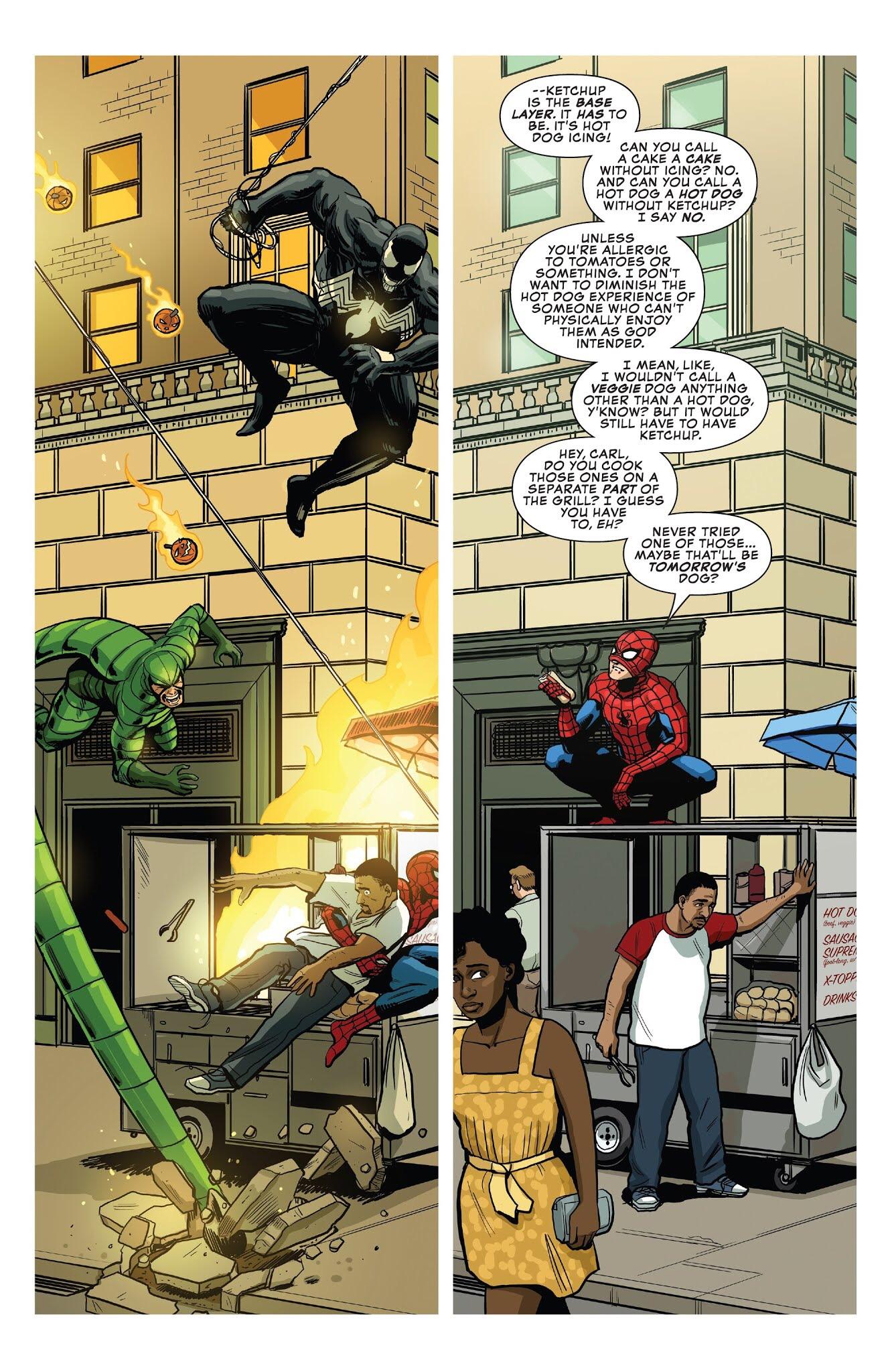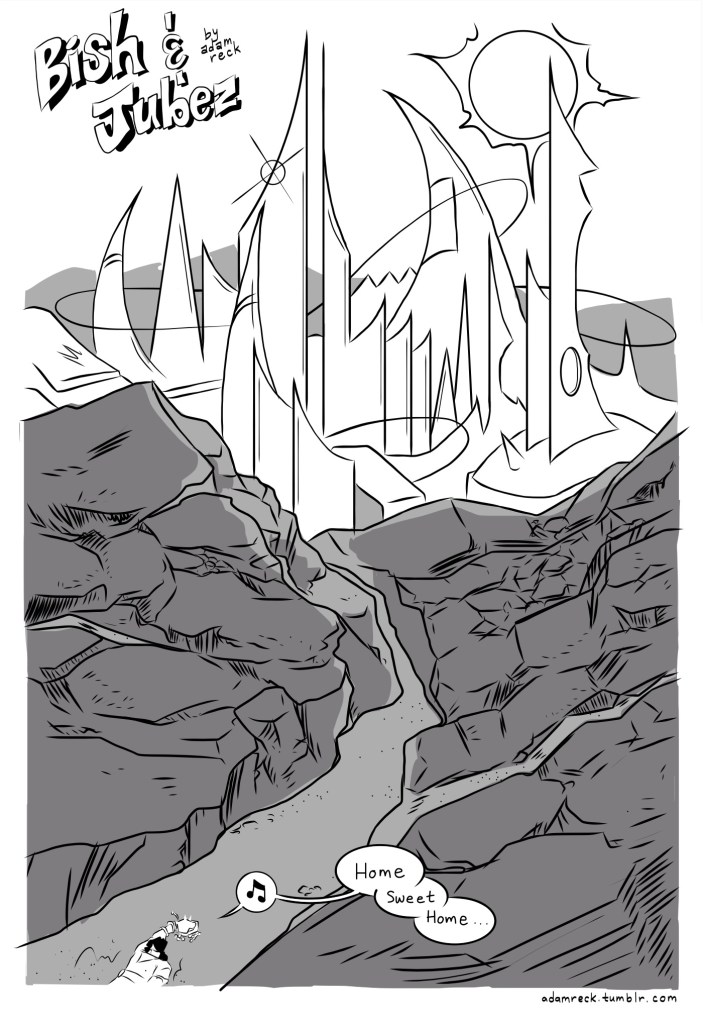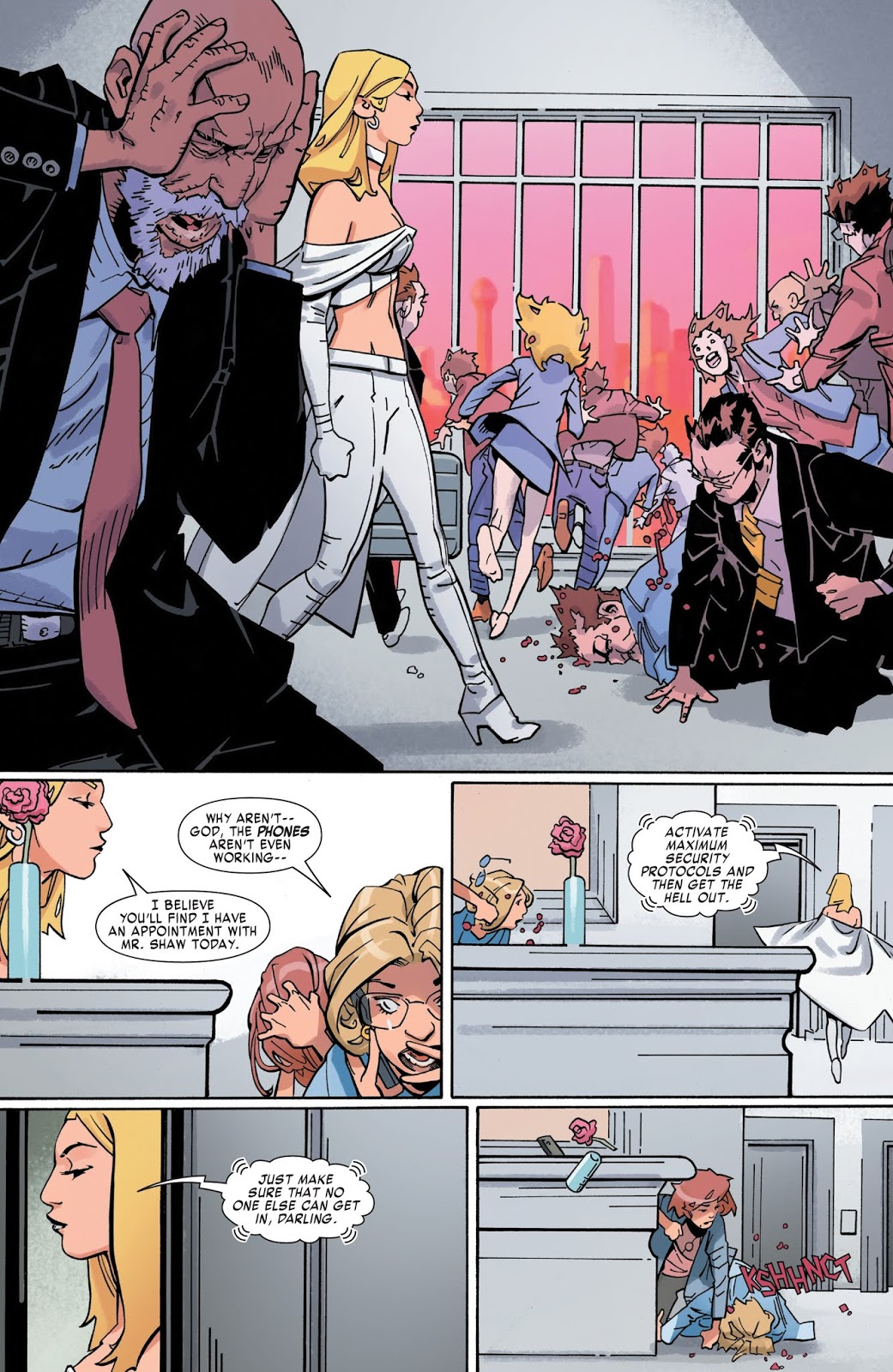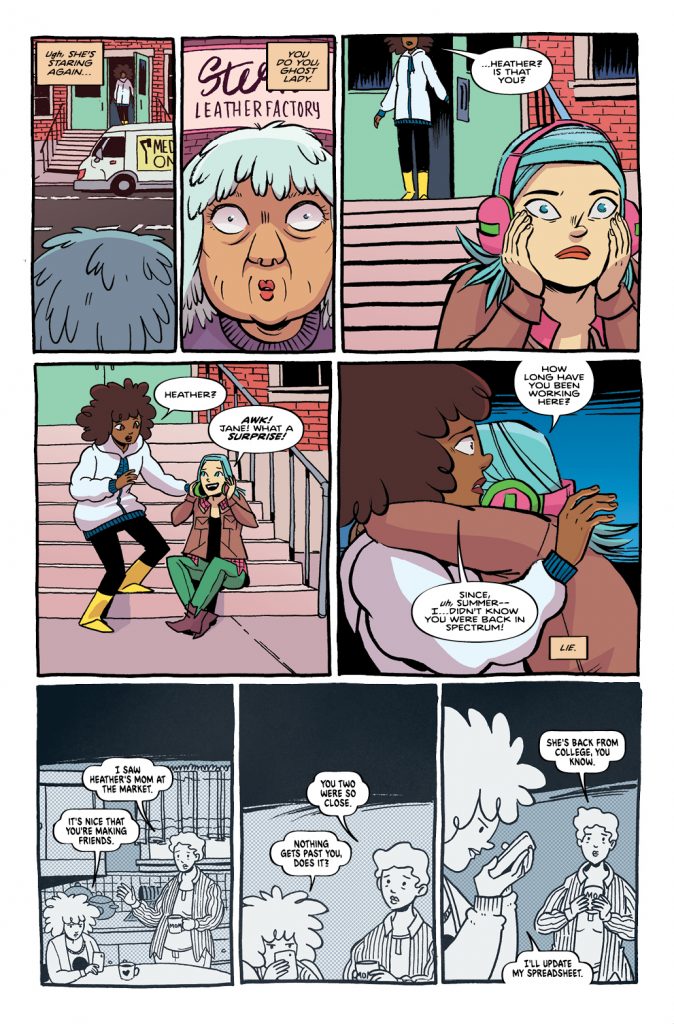The books that shined brightest in an unsure year.
As long ago as it feels like it was, casting my memory back to late March reminds me how unsure we were about the industry in those early days. As creators were told to put pencils down, the bigger companies slowed their output and Diamond stopped the presses. The change that came from the current times might not be as unprecedented as first anticipated, but strides are being made to find alternate methods of distribution. It’s an ongoing process not a single flashpoint, and because of that I don’t want to speak too long on something that is still early days in the grand scheme. Instead, this post is here to celebrate the titles that I enjoyed the most this year, a mixture of titles in various formats, from multiple publishers and numerous, ridiculously talented creators. A combination of factors which shows that, especially this year, comics will survive one way or another, even if we’ve no idea what form they end up taking going forward.
First of all, some very good books that unfortunately didn’t publish enough issues for me to put them on the numbered list, but that I still wanted to shout-out: Crowded #11-#12 (Image), Friday #1-#2 (Panel Syndicate), Other History of the DC Universe #1 (DC), Superman Smashes the Klan #3 (DC) and the various White Noise Launches of the past few months, A Dark Interlude (Vault), Giga (Vault), Home Sick Pilots (Image) and The Picture of Everything Else (Vault).
Next, some Honourable Mentions: Doctor Strange: The End (Marvel), John Allison’s Wicked Things (Boom!) in addition to his webcomics Destroy History and a triple threat of Steeple stories, Ludocrats (Image), the Kyle Starks-Kickstarted Old Head, We Only Find Them When They’re Dead (Boom!) and X-Men: Snapshots (Marvel).
And now, the list:

25. Dead End Jobs for Ghosts (Shortbox)
Should be praised as much as Mark Russell’s satiric works are. Aminder Dhaliwal asks what if workforce automation was actually the result of dead people and mines the premise for all the humour, societal observation and human drama they can.

24. Heartthrob Season 3 (Oni Press)
Christopher Sebela ends the series with an afterword that talks about how much the direction of this book surprised him; how lead character Callie’s experiences and seeing the world through her eyes led to talking about things that he couldn’t have predicted when he was thinking about this 70’s-set crime story in its early moments of genesis. That there is the thrill of reading Heartthrob, it leads you down roads you don’t see coming and you’re more than happy to be along for the ride.

23. Pulp (Image)
Ed Brubaker, Sean Phillips and now Jacob Phillips can create books like this on autopilot. As a result, they may not wow as much as they used to, but the work ethic is to be nevertheless commended — a factor which extends to their intentions to produce another two Reckless volumes this year. Pulp is about reality and fiction informing each other, a book that’s always moving forward, to the next thing of import (much like its creative team), the past bleeding onto the pages as if they were tea-stained. The team take the structure of a revisionist western and shift the timeline just a few decades further, taking what we usually think of as belonging to the 19th Century and using elements of the 20th Century to reinforce how much things can change and how hard it can be to leave the old world behind.

22. Alienated (Boom! Studios)
One of Spurrier’s more emotionally wrought tales and one that lands frequent gut-punches over the course of its story because of how well Chris Wildgoose and André May define the characters upon their first appearances.

21. Whedonverse (Boom! Studios)
The line was firing on all cylinders in 2020. Firefly saw Greg Pak continue to deepen his contributions to the ‘Verse, culminating in Blue Sun Rising which caps off these opening two years. (#25 will be taking a jump to further along in the timeline.) Hellmouth concluded at the start of the year and led to Buffy expanding its cast further — and it did so while still allowing Mariko Tamaki the space within the universe to pen a Willow miniseries that looks absolutely beautiful as a result of Natacha Bustos and Eleonora Bruni’s soft artwork — in order to blaze its own trail, one that has already become very distinct to the source material. Angel & Spike appears to have concluded, yet did so by ending its strongest succession of issues courtesy of Zac Thompson and Hayden Sherman. One of the better examples of how to do licensed comics, one where audiences know what to expect in terms of characterisation, but where this is used as the foundation for something new over rehashing what’s already been.

20. Night Train (TKO Studios)
A wonderful and eerie (one-)shot of horror from Steve Foxe, Lisandro Estherren, Patricio Delpeche and Steve Wands. This was the year I finally decided to check out some of TKO’s output and as much as their larger series get press — one of which we’ll get to in a bit — these shorts could easily fall by the wayside.

19. Nancy by Olivia James
Still the first thing I check every morning.

18. Bad Karma (Panel Syndicate)
A Shane Black buddy-cop attempt at redemption for past sins by way of Alex Di Campi, Ryan Howe and Dee Cunniffe.

17. Aquaman (DC)
Never been a big Aquaman guy, even as the past decade has seen people hold up runs from Johns, Parker and Abnett as “why he’s cool now/doesn’t just talk to fish/etc.” Kelly Sue DeConnick’s run however has captivated me from the start, starting as a story of someone who needs to find themselves and expanding to encompass his relationship with Mera — like remember how the Rebirth one-shot all the way back in 2016 made it seem like their marriage was imminent — and the political quagmire going under the sea. She was on the book longer than she anticipated, but the extra time allowed her to flesh these elements and their connections out further and stick the landing in a superb way.

16. The X-Line (Marvel)
Fallen Angels aside, the line continued to grow from strength to strength. Each additional book adds to the overall portrait of the Krakoa era and further reinforces just how bold the reinvention of a franchise should actually be. Personal favourites have been X-Men, Marauders and Hellions. This year’s storytelling all culminated in X of Swords — I reviewed it here — which is a remarkable accomplishment of collaboration, an event which manages to feel big without losing sight of its smaller moments as well as ensuring that it presents new dynamics for where the various series can go in 2021.

15. No One’s Rose (Vault)
Wrote a review of the series’ first issue when it seemed like it might be the last chance to do so for a single issue. Of course the industry survived, but in the moment where it seemed like it wouldn’t, this was a book that gave me hope. Not something I feel all that often anymore. The fact the rest of the series managed to do that as well despite things getting even worse is a testament to its quality.

14. She Would Feel the Same (Shortbox)
“It’s still a love story. Just maybe not a “good” love story.”
Based on this tender and considered depiction of a relationship that just happened to fizzle out, Emma Hunsinger is a talent to keep an eye on.

13. Sex Criminals (Image)
I remember finding out about this series just as those early issues were becoming a phenomenon. It was ridiculously funny — see: brimping — but that wasn’t going to be enough to sustain a full series considering the rate and velocity of which jokes were being thrown out. A factor that Matt Fraction and Chip Zdarsky quickly realised. The transition from being focused on humour to delving delving into what made Suzie, Jon and all the other characters into who they are became the heart of the series. Admittedly, it turned some people off, but it arguably became a better series. Or at least, that’s what I’d argue. And as someone who became deeply invested in that dynamic, this concluding arc handles that and everything else it accomplishes in a meaningful fashion.

12. Far Sector (DC)
Jamal Campbell is a superstar. Which would be enough for this series to be of interest in and of itself, though thankfully N.K. Jemisin is also crafting a Lantern story that interrogates the Space Cop and militarised angles that the franchise has become so entrenched in.

11. Daredevil (Marvel)
Watching Zdarsky’s trajectory as a writer over the past few years has been a great thing to see as he’s proven to be capable of challenging himself, whether it’s the serious fracturing of wartime camaraderie as seen in Invaders or the Twilight Zone-style sci-fi of Stillwater. What makes Daredevil the cream of the crop however is how stunning it looks thanks to artists like Marco Checchetto and Jorge Fornés. The series has long been considered one of Marvel’s most consistently strong titles and this run is certain to further support that claim as it heads into its third year.

10. Die (Image)
A book that hurts to read due to its rueful tone and precise emotions as rendered by Stephanie Hans.

9. Immortal Hulk (Marvel)
To be frank, this is a book that intimidates me. The sheer scope of what Al Ewing and Joe Bennett are doing only expands with each passing arc. Even after 40+ issues it manages to surprise and shock just as much as those early body horror elements first did. If you care enough about comics to be reading someone’s list of the best of any given year, you’re likely already reading it in some capacity. But if you’re not, let me add to the chorus and tell you to just pull the trigger on the collected editions or starting it on Marvel Unlimited and get to work catching up.

8. Blue In Green (Image)
Visual jazz. A remarkable collaborative experience to behold. Was blown away just reading it and then I found out that it was partly improvised during the process and was impressed even more. Ram V was already having quite a year by making waves at DC by way of his Catwoman and Justice League Dark scripting, but what he does here alongside Anand RK, Aditya Bidikar, Josh Pearson and Tom Muller is on an entirely different level. It can be tricky enough just finding a way of translating music into an non-aural medium, but to accomplish this alongside creating a great horror experience where the reader ultimately decides the pace just means they deserve to be commended even more.

7. Redfork (TKO Studios)
Of course, it’s been a pretty great year for all involved in the White Noise collective. Alex Paknadel, Nil Vendrell, Giulia Brusco and Ryan Ferrier teamed together for a tale about the all too human cost of capitalism. There’s a page in here where two characters talk while circling a sinkhole, the structure very much like that famous Sienkiewicz Moon Knight page, which manages to capture how much modern life can feel like skirting the abyss while still being somewhat tempted to gaze into it, just to see if there’s anything in there.

6. November: The Gun in the Puddle & The Voice at the End of the Phone (Image)
Wrote a review of the second volume of which every bit of the praise, as well as the minor lettering critique, is also applicable to the third, and presumably the soon-to-be fourth which will conclude the series. The culmination of Fraction’s formal preoccupations.

5. Superman’s Pal: Jimmy Olsen (DC)
A perfect pairing of creative team to character. A series with genuine love for the DC Universe’s storied history and oddity. Fraction, Steve Lieber, Nathan Fairbairn and Clayton Cowles look back on all the wacky stuff that’s preceded their contribution and owns this lineage without ever feeling the need to tone it down. Instead, they see it as a level of madcap energy to aspire to. Should be an evergreen title for the company if they have the good sense to recognise its long-lasting potential.

4. Don’t Go Without Me (Shortbox)
Won’t say too much about these three tales from Rosemary Valero-O’Connell. If you read Laura Dean Keeps Breaking Up with Me, then you know how vivid her craft as an artist is. And after all, what use would my prose be to describe visual poetry such as her’s?

3. John Constantine: Hellblazer (DC)
Came to this late due to not having read any solo Constantine books prior and the Sandman Universe branding had me thinking it might be entangled in additional material I hadn’t yet gotten to. As such that meant I came to it after it had already been cancelled, so consider this a lament that we’re not getting any more of what has been DC’s most cutting and political book in quite some time. Spurrier, artists Aaron Campbell and Matias Bergara plus the always dutiful Jordie Bellaire and Aditya Bidikar capture the mood of current Britain, how easy it is to feel adrift and lost in a country verging closer to the brink of disaster. On top of all that, they manage to tell a character-driven story, building up John and his supporting cast in a way that leaves me (and everyone who has read it) wishing there were more. Still, with the issues we did get and considering how erratic the publisher has been in the past few years, this isn’t a book that the creative team made, more one that they got away with. And for that we should be grateful we got this much of it.

2. The Impending Blindness of Billie Scott (Avery Hill)
An absolute barnburner of a debut. It’s about coming face to face with a personal apocalypse and what it takes to make it through. You don’t have to do it alone, with the way that it comes to supporting that thesis being even more impactful considering… you know, *gestures at the current world*. Zoe Thorogood has such a talent for character and detail already, with each new vignette and interaction weaving together to flesh out the texture of the overall piece. I have a page of it on my wall. It’s a book that came to me at the exact right time as its handling of what it means to create amidst chaos was the impetus I needed to get around to writing a script that had been taking up residence in my head for months. And for anything I write going forward, if I ever start to falter, I can look over to that page and let it inspire me again.
(If you haven’t read it yet, there’s a second printing on the way with more appropriately sized text, I’d hold off until that happens).

1. Dragon Hoops (First Second)
There’s a motif that Gene Luen Yang sets up on the very first page of this graphic novel. The narrative is structured into a series of chapters that each focus on a particular character with the prologue starting with himself. He doesn’t understand sports and the in-story version of himself steps off the basketball court, Yang taking a panel to depict the step. A few pages later, he’s at the school he works at and on his way to talk to Couch Lou, a man he doesn’t expect to have much in common. Again, Yang focuses in on his avatar’s feet as he takes the first step towards the gym, this time forward. Into the unknown. Dragon Hoops is about first steps, as well as so much more, but it is primarily about following through. It is about every step that comes after, all in the name of progress and what it means to try, regardless of the possibility of eventual achievement.
Yang’s cartooning is so full of life in its depiction of Bishop O’Dowd High School and the ecosystem of students and teachers that congregate there most days of the year. I had a feeling that it would be my book of the year since I read it back in April, when the state of comics distribution amidst a pandemic was up in the air — at least, more than it is now — and as much as this list stands as testament that were many great books released this year, none of them managed to topple this from the top spot.






















